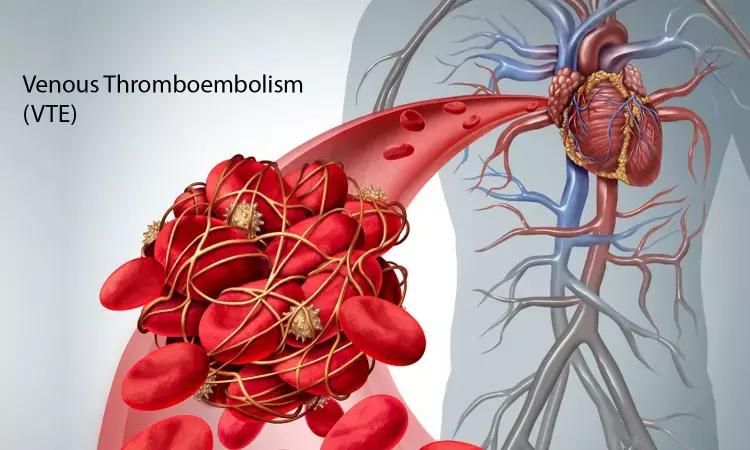
Rivaroxaban Superior To Enoxaparin At Preventing VTE After Orthopedic Surgeries
- byDoctor News Daily Team
- 18 February, 2025
- 0 Comments
- 0 Mins

Researchers have found that Rivaroxaban was more effective than enoxaparin for preventing venous thromboembolism (VTE) events without increasing bleeding risk in patients immobilized after nonmajor lower limb orthopedic surgery. The Late-Breaking Clinical Trial PRONOMOS was presented during ACC.20/WCC and simultaneously published in the New England Journal of Medicine.
The researchers conducted a randomized stratified trial to evaluate rivaroxaban compared with enoxaparin among patients immobilized after lower-limb nonmajor orthopedic surgery.
In the study the patients immobilized after orthopedic surgery were randomized to rivaroxaban 10 mg daily/enoxaparin placebo (n = 1,809) versus enoxaparin 4000 IU subcutaneous daily/rivaroxaban placebo (n = 1,795). The total number of enrollees was 3,604 withe mean patient age being 41 years and the total percentage of females participating in the trial was 34%.
The inclusion criteria were adults undergoing nonmajor orthopedic surgery of the lower limbs and requiring thromboprophylaxis for >2 weeks
The Intended treatment duration was 2 weeks to 1 month in 60%, >1 month to 2 months in 37%, and >2 months in 3%. The study was however terminated early in April 2018 due to slow enrollment.
The primary efficacy outcome of major venous thromboembolism (VTE), defined as symptomatic distal or proximal deep vein thrombosis (DVT), pulmonary embolism, or VTE-related death during the treatment period, or asymptomatic proximal DVT at the end of treatment, occurred in 0.2% of the rivaroxaban group compared with 1.1% of the enoxaparin group (p = 0.01).
The primary safety outcome of major and clinically relevant nonmajor bleeding occurred in 1.1% of the rivaroxaban group compared with 1.0% of the enoxaparin group (p = 0.62).
The secondary outcomes were net clinical benefit: 0.8% of the rivaroxaban group compared with 1.8% of the enoxaparin group (p < 0.05)
It was concluded that among patients immobilized after nonmajor orthopedic surgery, rivaroxaban compared with enoxaparin was associated with a reduction in major VTE. Major bleeding was similar between treatment groups. Most patients received rivaroxaban from 2 weeks to 1 month. Rivaroxaban may represent an alternative to enoxaparin among patients at risk for major VTE after nonmajor orthopedic surgery.
For further reference log on to:
Samama CM, Laporte S, Rosencher N, et al., on behalf of the PRONOMOS Investigators. Rivaroxaban or Enoxaparin in Nonmajor Orthopedic Surgery. N Engl J Med 2020; Mar 29:[Epub ahead of print].
Disclaimer: This website is designed for healthcare professionals and serves solely for informational purposes.
The content provided should not be interpreted as medical advice, diagnosis, treatment recommendations, prescriptions, or endorsements of specific medical practices. It is not a replacement for professional medical consultation or the expertise of a licensed healthcare provider.
Given the ever-evolving nature of medical science, we strive to keep our information accurate and up to date. However, we do not guarantee the completeness or accuracy of the content.
If you come across any inconsistencies, please reach out to us at
admin@doctornewsdaily.com.
We do not support or endorse medical opinions, treatments, or recommendations that contradict the advice of qualified healthcare professionals.
By using this website, you agree to our
Terms of Use,
Privacy Policy, and
Advertisement Policy.
For further details, please review our
Full Disclaimer.
Tags:

Recent News
Normal-Tension Glaucoma Closely Associated With Co...
- 10 October, 2022
Air Pollution Tied To Increased Risk Of Premature...
- 24 May, 2023

Daily Newsletter
Get all the top stories from Blogs to keep track.


0 Comments
Post a comment
No comments yet. Be the first to comment!